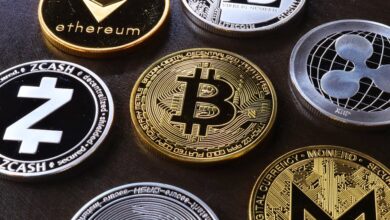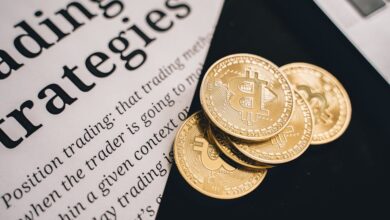Navigating the Gold Market: A Comprehensive Guide to Gold Futures, Options, and Investment Strategies

In an ever-evolving financial landscape, gold continues to capture the attention of investors and traders alike, primarily due to its historical significance as a safe haven asset. As uncertainties loom in global markets, understanding the dynamics of gold investment through derivatives like gold futures and options becomes essential. This article delves into the intricacies of speculating on gold prices, offering a comprehensive primer on these financial instruments and their role in the gold market. We will explore the significance of gold as a hedge against inflation and economic turmoil, analyzing current market trends and investment strategies that can enhance your portfolio. Additionally, we will examine various gold investment opportunities, ranging from gold ETFs and physical gold to innovative technologies in gold recycling and sustainable gold mining practices. Join us as we navigate the complexities of gold market analysis and discover how to effectively capitalize on the myriad possibilities presented by gold futures and options in today's fluctuating economic environment.
- 1. Understanding Gold Futures and Options: A Primer on Derivatives in the Gold Market
- 2. The Role of Gold as a Safe Haven Asset: Analyzing Market Trends and Investment Strategies
- 3. Exploring Gold Investment Opportunities: From Gold ETFs to Physical Gold and Beyond
1. Understanding Gold Futures and Options: A Primer on Derivatives in the Gold Market
Understanding Gold Futures and Options: A Primer on Derivatives in the Gold Market
Gold has long been regarded as a safe haven asset, attracting investors seeking stability amid economic uncertainty. Speculating on gold prices through derivatives, particularly gold futures and options, offers a strategic approach to investing in this precious metal. Gold futures are contracts that obligate the buyer to purchase, and the seller to sell, a specific amount of gold at a predetermined price on a future date. This mechanism allows investors to hedge against price fluctuations in the gold market, which can be influenced by factors such as global gold demand, inflation, and changes in central banks' gold reserves.
Options, on the other hand, provide the right, but not the obligation, to buy or sell gold at a specific price within a certain timeframe. This flexibility makes options an appealing choice for investors looking to capitalize on short-term price movements without the commitment of futures contracts. Both gold futures and options are traded on various exchanges, and their prices are influenced by the underlying gold market trends, including gold production, gold refining processes, and the overall health of the gold mining industry.
Investing in these derivatives allows traders to speculate on gold prices without needing to hold physical gold, such as gold bullion, gold bars, or gold coins. However, it also requires an understanding of the market dynamics, as well as the impact of external factors like gold recycling initiatives and the rise of gold technology that may affect supply and demand.
Additionally, with the increasing interest in sustainable gold mining practices and the push for ethical sourcing, investors are becoming more conscious of the implications of their gold investments. The interaction between gold and cryptocurrency has also emerged as a noteworthy trend, leading to discussions about the future of gold in the digital age.
For those looking to diversify their investment portfolios, gold ETFs (exchange-traded funds) can provide exposure to gold prices without the complexities of futures and options trading. However, it’s essential to conduct thorough gold market analysis to understand the risks and benefits associated with each investment avenue.
In summary, understanding gold futures and options is crucial for investors looking to navigate the complexities of the gold market. Whether considering gold coins investing or exploring the potential of luxury gold collectibles, a solid grasp of these derivatives can enhance investment strategies and lead to informed decisions in a dynamic market landscape.
2. The Role of Gold as a Safe Haven Asset: Analyzing Market Trends and Investment Strategies
Gold has long been regarded as a safe haven asset, particularly during times of economic uncertainty or inflationary pressures. Investors often turn to gold investment as a hedge against market volatility, making it a vital component of a diversified portfolio. The dynamics of the gold market trends reveal that when traditional assets falter, gold prices typically remain resilient or even appreciate. This reaction can be attributed to the asset's intrinsic value, limited supply, and historical significance as a store of wealth.
As central banks around the world accumulate gold reserves, the demand for gold continues to rise. This is evident in the growing interest in gold futures and options, which allow investors to speculate on future gold prices without needing to hold physical gold. Gold ETFs (exchange-traded funds) also provide an accessible means for investors to gain exposure to gold without the challenges of gold storage and security associated with physical gold.
Investment strategies involving gold can vary widely. Some investors prefer to buy gold bullion, gold bars, or gold coins, which can serve as a tangible asset. Others may opt for gold technology investments, focusing on companies involved in gold mining, refining, and sustainable gold mining practices. Moreover, gold recycling has gained traction as a means to meet growing global gold demand while minimizing environmental impact.
In recent years, the correlation between gold and inflation has intensified discussions about gold as a hedge. As inflation rates rise, investors often flock to gold, further driving up prices. Additionally, the rise of cryptocurrencies has prompted some to question gold's role in the modern investment landscape. However, as a traditional safe haven asset, gold remains a preferred choice for many looking to protect their wealth against economic fluctuations.
The luxury gold market, including gold jewelry and gold collectibles, also contributes to the overall demand for gold. The allure of gold coins investing has garnered attention, with collectors viewing these items not only as a form of currency but also as valuable assets that can appreciate over time.
In conclusion, the role of gold as a safe haven asset is underscored by its historical significance, ongoing demand from central banks, and varied investment strategies. As market conditions evolve, gold continues to stand out in the global gold trade, offering investors a reliable means of safeguarding their capital. Through careful gold market analysis, investors can make informed decisions that align with their financial goals.
3. Exploring Gold Investment Opportunities: From Gold ETFs to Physical Gold and Beyond
Investing in gold offers a diverse range of opportunities for both seasoned investors and newcomers looking to capitalize on the precious metal's enduring value. As a safe haven asset, gold has historically been favored during times of economic uncertainty and inflation, making it an attractive option for many. Here, we explore the various avenues for gold investment, from gold ETFs to physical gold and more.
Gold Exchange-Traded Funds (ETFs) have become increasingly popular among investors seeking to gain exposure to gold prices without the complexities of physical ownership. These funds track the price of gold and trade on major stock exchanges, making them an accessible option for those who prefer a more liquid investment. Gold ETFs allow investors to benefit from fluctuations in the gold market trends without the need for storage or security concerns associated with physical gold.
For those who wish to hold tangible assets, physical gold remains a time-honored investment choice. This includes gold bullion, gold bars, and gold coins, which can be purchased from dealers or mints. Investment-grade gold coins and collectibles not only serve as a hedge against inflation but also have intrinsic value due to their craftsmanship and historical significance. Additionally, gold jewelry, often considered a luxury gold investment, can appreciate over time, especially pieces made from high-purity gold.
Investors can also consider gold mining stocks, which offer exposure to companies involved in gold production. This route provides a leveraged play on gold prices as mining stocks typically experience greater price volatility than gold itself. By analyzing gold market analysis reports and understanding global gold demand, investors can make informed decisions about which mining companies to back.
The gold recycling sector has also gained traction, allowing investors to tap into the secondary market. This process involves reclaiming gold from old jewelry, electronic devices, and other sources, contributing to sustainable gold mining practices. Additionally, central banks are increasing their gold reserves, further driving demand and stability in the gold market.
Finally, as the digital landscape evolves, some investors are exploring the intersection of gold and cryptocurrency. This innovative approach provides an alternative investment strategy, blending the traditional appeal of gold with the growing interest in digital assets.
In summary, the gold investment landscape is rich with opportunities, whether through gold ETFs, physical gold, or mining stocks. Investors should assess their risk tolerance and market conditions to determine the most suitable approach for their portfolio. Embracing the multifaceted nature of gold can lead to rewarding investments in the ever-evolving gold market.
In conclusion, engaging in gold futures and options provides investors with a dynamic way to speculate on gold prices while tapping into the broader trends influencing the gold market. Understanding the intricacies of these derivatives is essential for making informed decisions, especially as gold continues to be recognized as a safe haven asset amidst economic uncertainty. As we analyze market trends, it becomes evident that gold remains a vital component of global gold demand, influenced by factors such as inflation, central bank policies, and the evolving landscape of gold technology.
For those interested in gold investment, the diverse options available—from gold ETFs and physical gold to gold coins and collectibles—allow for tailored strategies that align with individual risk appetites and financial goals. Furthermore, sustainable gold mining practices and responsible sourcing are increasingly important in the context of ethical investing, enhancing the appeal of gold as a long-term asset.
As you navigate the complexities of gold futures and options, consider the broader implications of gold production and refining, as well as the impact of gold recycling on market dynamics. Whether you're a seasoned investor or a newcomer to the gold trade, staying informed about gold market analysis and global trends will position you to make strategic investment choices. As the gold market evolves, so too will the opportunities it presents, ensuring that gold remains a cornerstone of both traditional and innovative investment portfolios.
References:
– [Include various credible sources related to gold trading, market analysis, and investment strategies here.]





